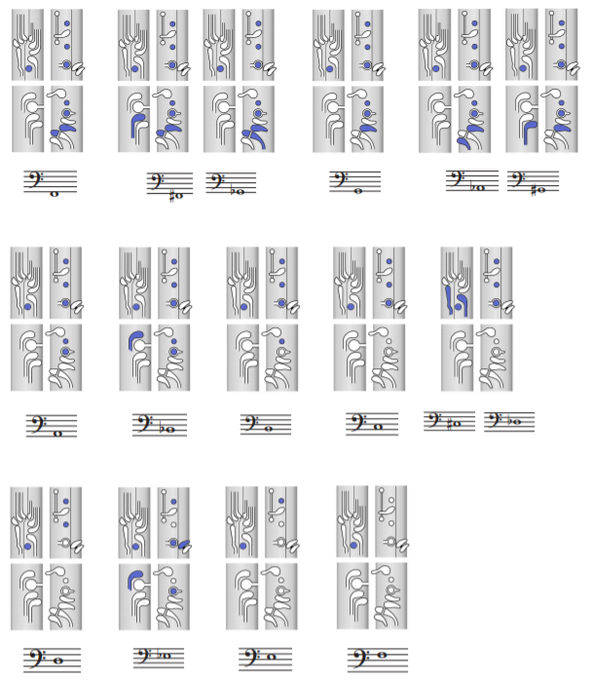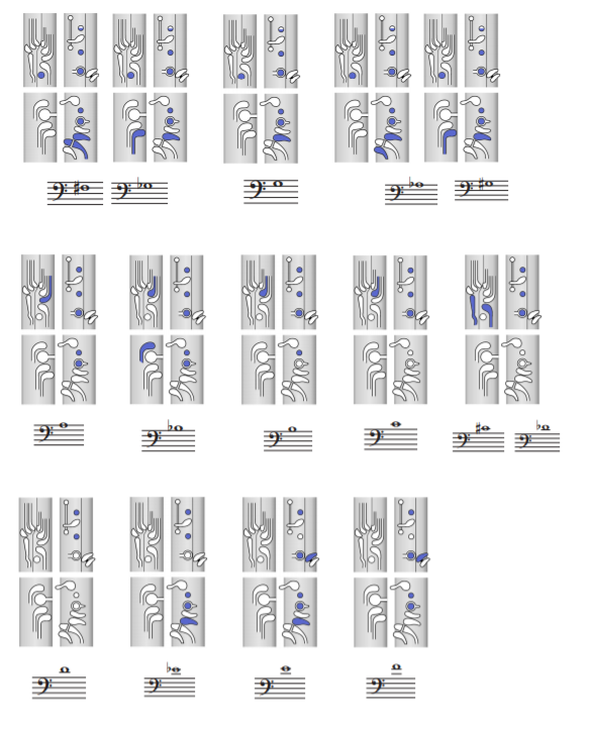The fingering chart below is intentionally minimalistic and represents the first fingerings I teach as "standard" and necessitated by concert ensemble literature for approximately the first two years of bassoon study. This is intended to replace the confusion and uneven tone and intonation provided by many non-bassoon-specific method collections.
For intermediate fingering resources, I highly recommend Dr. David Wells' leveled charts.
For everything but the kitchen sink - including multiphonics, quartertones, standard and timbre trills, modified coloring, and extreme (extreme!) registers - check out the extensive fingering archives of the International Double Reed Society.
Find a good one and need to save it? Type it in to Dr. Bret Pimentel's fingering diagram builder and download the image!
For intermediate fingering resources, I highly recommend Dr. David Wells' leveled charts.
For everything but the kitchen sink - including multiphonics, quartertones, standard and timbre trills, modified coloring, and extreme (extreme!) registers - check out the extensive fingering archives of the International Double Reed Society.
Find a good one and need to save it? Type it in to Dr. Bret Pimentel's fingering diagram builder and download the image!
Remember: we do our best with "alternate fingerings" to avoid sliding thumbs and pinkies for consecutive notes, so this should guide you in your decision as to whether to use the first or second listed F-sharp/G-flat or G-sharp/A-flat fingerings. Use the thumb option when the next note requires the pinky and vice versa. The first and most common examples of this is using the pinky F-sharp/G-flat when neighboring the D-sharp below (as in E minor) or the B-flat above (in G minor or G-flat major.
Instead of memorizing a series of special case fingerings, using this logic of alternating thumbs and pinkies when possible creates a framework for decision-making, rather than overloading and overwhelming.


